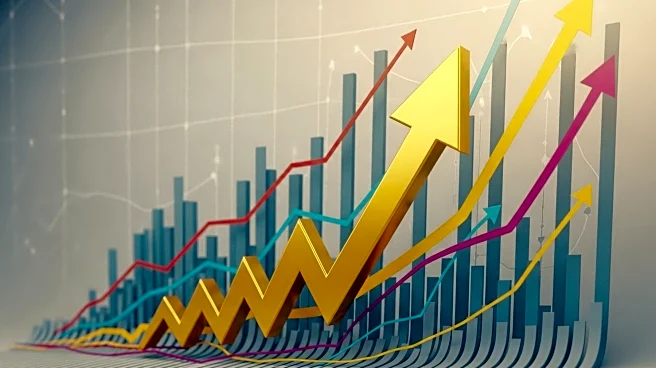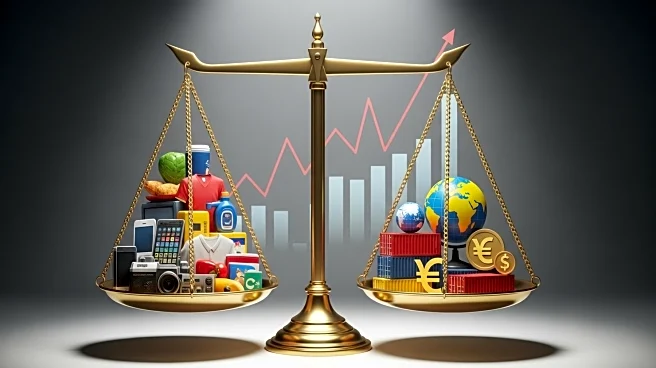What's Happening?
The U.S. economy expanded at a 3.8% annual rate in the second quarter of 2025, a significant upgrade from the previous estimate of 3.3%, as reported by the Commerce Department. This growth follows a 0.6% contraction in the first quarter, attributed to the impact of President Trump's trade policies. The second-quarter rebound was driven by a substantial decrease in imports, which fell at a 29.3% pace, and a rise in consumer spending by 2.5%. The reduction in imports was a reversal from the first quarter's surge, which was influenced by businesses importing goods ahead of potential tariffs. The report marks the final estimate for the second quarter, with the next GDP estimate for the third quarter expected on October 30.
Why It's Important?
The revised GDP figures underscore the influence of trade policies and consumer behavior on economic performance. The growth suggests a resilient economy, potentially impacting the Federal Reserve's approach to interest rates. While the Fed recently cut rates to support employment, the stronger GDP data may reduce the urgency for further cuts. The economic expansion also highlights the ongoing effects of trade tensions and policy uncertainty on business operations and hiring. Despite the growth, challenges remain, including slower job creation and inflationary pressures from tariffs, which could affect future economic stability.
What's Next?
The upcoming release of the third-quarter GDP estimate will be pivotal in assessing the sustainability of the current growth trajectory. Economists predict a slowdown to a 1.5% growth rate, reflecting potential headwinds from trade and monetary policy. The Federal Reserve's decisions in the coming months will be critical, as it balances the need to support the labor market with managing inflation and economic growth. Businesses and policymakers will need to navigate the complexities of trade policies and their implications for the broader economy.










